“A lot of people said how could you go back there after that fire? How could we not be here? This is where we met, we raised our kids and grow our wine.”
JANICE HANSEN ZAKIN is a physician and co-proprietor of Zakin Family Vineyards in St. Helena, California. Raised in Hawaii, she received her medical degree from the University of Hawaii, completed her residency in Obstetrics and Gynecology, and ran a successful private practice on the islands of Oahu and Lanai until 1999, when she and her husband, Jon Zakin, opened a new chapter in their lives.
“The 150-acres we purchased in Napa was the perfect blank canvas for us to build a home,” Jan Zakin reflected. As the project unfolded, “We decided to set aside an initial four-acres and plant our own private vineyard. The land had never been planted.”Their vision would eventually yield one of the most unique wineries in Napa.
Janice has served on the boards of Hawaii’s Sex Abuse and Treatment Center; EngenderHealth; American Red Cross; California College of the Arts; UNICEF; and San Francisco Ballet. She maintains a medical practice at the San Francisco Free Clinic and is Medical Advisor for the hair products company, Madison Reed. She consults for NASA, where she is an active member of the HIRRB and IFIOC boards.
What is the origin of the Hansen name?
Hansen is the third most common surname in Denmark after Nielsen and Jensen. My father was a Danish immigrant and came to Canada when he was 15. The Germans were invading Denmark, and he fled lying about his age. He worked on a merchant ship, then jumped ship in Seattle and ended up in Vancouver.
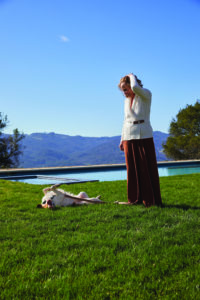
Once in Canada, what did he do?
He was a “hell driver,” which is someone that performs daredevil stunts with cars. He would drive through fiery hoops and do other car stunts for spectators. He did that until he became a used car salesman. We really were very poor.
Was your mother also Danish?
No. She was second generation Norwegian, but also from Canada. When she met my dad, she was a cigarette girl at the Vancouver Hotel. They were married and had two children, my sister and me.
Did they remain married?
No, they divorced when I was in the sixth grade. My mother remarried a military man.
At age six, you moved from Canada to Hawaii? Why?
It was February, and the Canadian weather was awful for the used car business because the salesmen worked outdoors. A good friend of my father’s was working in Hawaii on a car lot and had a job for him. It all seemed very exotic. I remember flying on Pan Am with the four props. It was a long flight, like nine to eleven hours, but it felt so short, and I never wanted to get off the plane. It was very exciting, and as we got off the airplane, you could smell the flowers. The hula girls greeted us.
Did you know that your parents would divorce?
Yes, they were fighting all the time, and it was obviously the best thing for both.
And your sister?
She is younger and is still living in Hawaii. She is a minister and has a wedding business where she performs marriages.
Was religion a big part of your formative years?
No, my parents would drop us off at Sunday school and then return home and go back to bed. I was raised Lutheran. My sister was “born again” in her early twenties. My father, after the used car business, started a wedding company that she took over after he died.
That is a bit of the paradox.
My father used to say, “When I was in the used car business, they used to call me your mother—and now they call me father.”
That is pretty funny.
Yes, it is pretty funny. He was a complete atheist. That marriage business was kind of a scam.
You were in sixth grade, and your parents divorced. Did your mother remain in Hawaii?
She did. She became a beautician and began a wig business. I remember having styrofoam heads, hair dryers, curlers and wigs everywhere. She would style wigs for the generals’ wives. She worked so hard to support my sister and me. She passed away four years ago at the age of 94.
Did she see you realize your dream of becoming a doctor?
She did. I was a nurse first, then I became a doctor. While she was always so supportive, my father was not.
You and your sister have a four-year age gap. How is that relationship today?
We were very different growing up. I was incredibly motivated to get an education. She was a singer, left school and went to Las Vegas when she was 15 years old. She had her 3 children before she was twenty and was married to a golf pro living in California. At that time, I was not interested in children, and we really had nothing in common. Once I had my own children, we became closer and when we were taking care of my mother, together, we became really close and remain very close to this day. It is really lovely. My mother was never placed outside our homes. We were committed to taking care of her. She spent half her time with me and then the other half with my sister.
The circle of life. What motivated you to excel academically?
I do not know where my drive came from . . . only that high school academics came easily for me. I did not have any mentors, but if I had, I probably would have gone straight from college to medical school. I simply did not know any better. I wanted to be a vet at that time. This was a long time ago, and my high school counselor told me that “women aren’t vets, they are nurses or teachers.” I thought, “Okay, I will be a nurse.” After two years of training, I became a registered nurse at age 19 and was placed on an intermediate care floor with tremendous responsibility. I was overwhelmed, and just did not enjoy it. I thought about going back to school to become a psychologist. I met an anesthetist who asked me if I ever thought of becoming a nurse anesthetist? I took another two-year program and entered this very high-level, high- functioning job, delivering anesthesia. I realized then that maybe I could become a doctor. I started taking night classes.
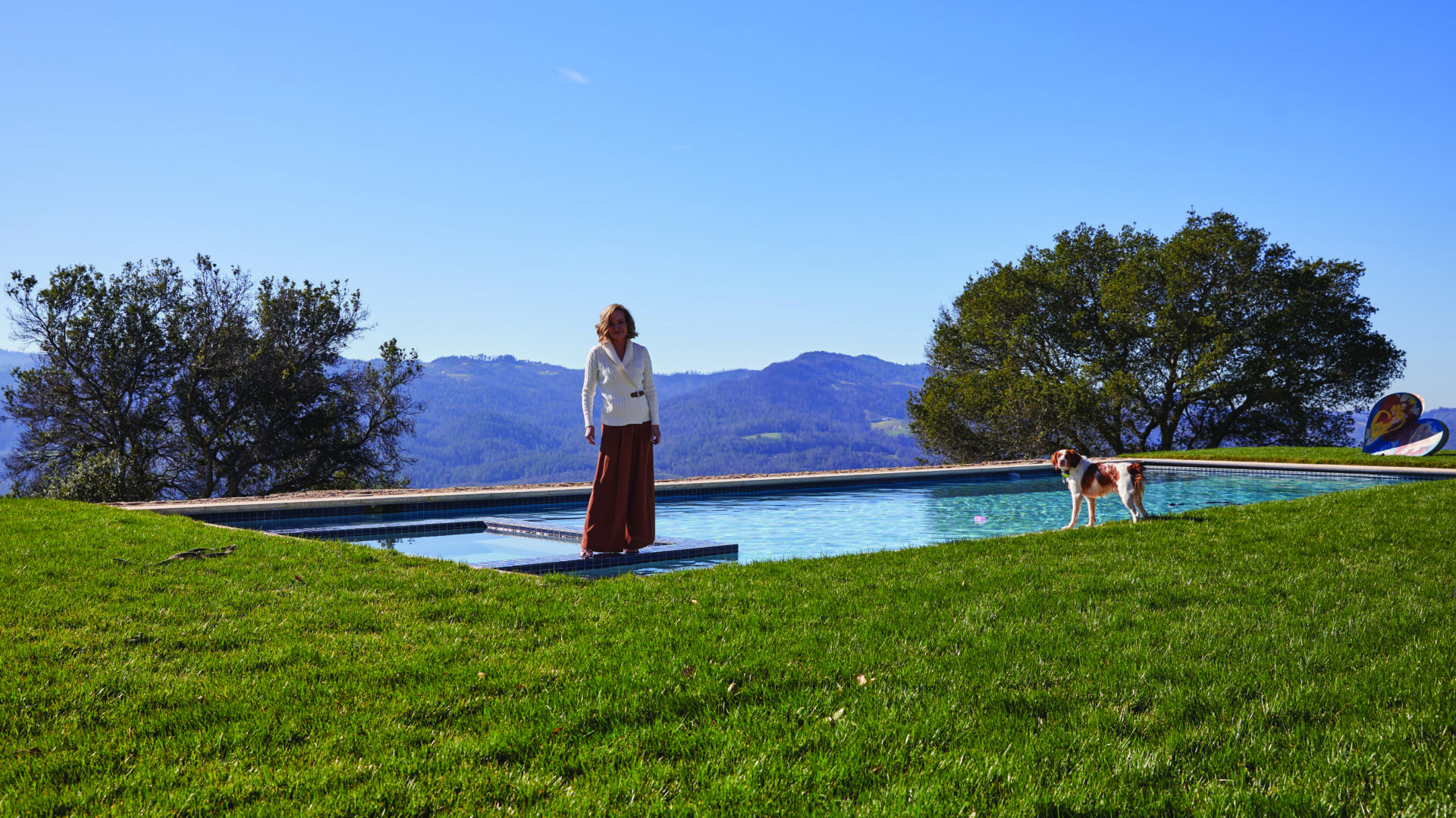
Was there one person that encouraged you to take the next step?
Mr. Henry, a big Hawaiian jolly guy, encouraged me after the final exam of my first college biology class. I had gone through the index to prepare, so I knew every single item on the exam as well as earning the twenty extra credit points. I made a 120, basically. He said, “you really can do this, you know.”
Is that the first time anyone encouraged you?
Yes. The first time anybody had ever told me that being a doctor was attainable and possibly was in my future. I realized at that point; I can do this. I was not the smartest, clearly, in my medical school class, but nobody worked harder than I did. Everybody else had a lot more fun. I was always studying late at night. I ended up graduating Alpha Omega Alpha, the top 10%, which was great. The nursing and anesthesia background helped me develop good clinical skills. I attended the University of Hawaii medical school, which was not strong on research but very strong clinically. It was the perfect program for me and changed my life.
How old were you when you graduated from medical school?
I was 31 when I graduated from medical school and 35 when I completed my residency.
Was that considered an average age?
No, I was older than the other medical students.
Did age benefit you?
Yes, because of my work-related experiences. I knew what a sick person looked like, and I was not afraid to be in the hospital. The academic part was more challenging because I went back to school and took only the minimum course load that I needed to get in. That first year of medical school was very hard because I did not have a degree in biochemistry; I had just taken one class in biochemistry. It was tough that first year. But once we got into the clinics, I felt very comfortable.
You put yourself “financially” through medical school. How did you do that?
I went to University of Hawaii because the tuition was $5,000 compared to that of George Washington and Georgetown which were $22,000. I took out student loans, and I had saved some money from my modeling days and my earlier nursing careers. I got through it.
Tell me about your modeling days.
It is interesting that my father would spend money on Patricia Stevens Modeling and Finishing School, but he would not send me to an academic private school. He was so proud of me modeling. I secured a White Stag ad which was carried by major magazines like Seventeen and Glamour. But the modeling was at a very low level and mostly local. The experience helped to motivate me because I was not a great model. I realized that I needed to have something of substance to support myself. I needed to get an education.
You are very athletic now. Did you always run? Did you always eat well? Did you always really take care of yourself?
No, I was never on any sports teams. I was motivated when I was living in Hawaii. I remember waking up while it was still dark, and I felt this energy in the air. I looked down from my apartment building, and it was the start of the Honolulu marathon. There was all this energy along the street. A cardiologist named Jack Scaff had a marathon clinic in the park. I went to the first meeting with my Bob Wolf super pros. He said, “You can run around Diamond Head.” It was so empowering to be able to run. Within about a year, I ran my first marathon on the Big Island. I finished in about five and a half hours. It was so empowering to realize, as a woman, you could be so strong, and you could accomplish goals you had defined.
That was when you were in medical school?
No, that was when I was a nurse.
When did you become an obstetrician?
After four years of med school and then four years of residency. When I went to med school, I went with the intention of becoming a child psychiatrist. I think part of that was because as a nurse anesthetist, you do not talk to your patients, and I am a very social person. I really missed that interaction. When I first rotated through psych, I realized it was not for me. I never considered being an obstetrician, with motherhood and babies. But I just loved it. On my first day, I delivered a baby, and it was so much fun. I loved being a surgeon. There is also a lot of psych involved, and you can help a lot of people if you are compassionate and willing to sit and listen. It turned out to be the perfect specialty for me.
You talk a lot about work ethic. Do you work as hard today as you did then?
I think I work harder.
And why is that?
I love what I do. Even with this wine business, it is not that I gave up medicine, I just augmented my work responsibilities and added to it. I love my life, and I love what I am doing.
You were 33 years old in 1990 and finally an OBGYN. Any love interests?
Yes, the father of my three children at that time was a plastic surgeon. We raised these beautiful kids and had a wonderful life in Hawaii. One of the reasons I ended up staying for residency was because he had just started a practice there. So, going off to do a residency elsewhere was not an option. Like so many women at that time, making choices in life were based on their husbands’ careers. The marriage did not work out.
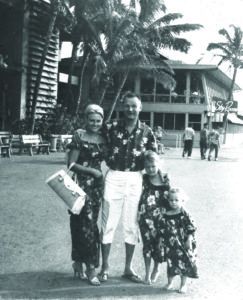
Do you communicate with him today?
Yes, mostly surrounding the kids.
Your divorce was finalized in 1998, and then 1999 comes along. How did you meet your husband?
I was here in California, on business, giving lectures on a low dose birth control pill. I was a single mother of three young children, my youngest daughter was two. I was visiting a friend who owned the property which now belongs to Cakebread Wines.
He introduced me to Jon who was from Chicago and had purchased the property and spent his first night there. At that time the road was dirt and they had a meeting to discuss paving it. He wanted to talk to Jon about the road, so we met underneath that oak tree there (pointing). A gestational theme here, right? We were married nine months later. We had our daughter on the very day of our first anniversary together. It was my fourth, but his first child.
What a beautiful story.
It has all been so magical. As if it is all meant to be.
Do you believe in love at first sight?
Totally. Oh my God.
You knew when you met Jon, he was the “one”?
I did not know, but he knew. He told me he was a screenwriter. Back then, you could not Google anybody. When he mentioned later that “he was in US Robotics,” I thought it was a toy company. He sent me the screenplay, and he asked me to review it. He said he wanted to see a birth/delivery. I was reading the screen play, and I thought, “Well, is this protagonist him?” We started chatting over the phone over the next few weeks, and then he came to Hawaii. I was not sure if he wanted to take me out or if he wanted to see a delivery. We went to the best restaurant, La Mer, overlooking the ocean, and he ordered an extraordinary wine. I said, “I can’t drink that wine and take call” to which he responded, “Well, just sign out.” He asked me to marry him the next day. I met his mother six weeks later and we married nine months later.
What is it about him?
He is just the smartest man I ever met. He made a lot of money at US Robotics but wears Gap pants. He is just the kindest person to his family. My ex was 15 years older. It was nice dating somebody my own age.
You had your last daughter Tatiana at age 46. I want to hear that story.
I had three children, Ryan, Tom and Christina, two boys and a girl, starting at age 34. I had no trouble getting pregnant with the first three. When Jon and I met, I was older, but we wanted to have a child together. I miscarried early in our first pregnancy at three weeks, and I started thinking that my eggs were too old. He was horribly negative. He said, “You are way too old to conceive and will need an egg donor. It is a waste of your time.” He talked me into a cycle of IVF. When they drew my blood, to my surprise, I learned I was already pregnant, and I did not even know it. “You don’t get credit for this one,” I thought. Our daughter was born at full term and healthy. There is a one in six chance children born from women at my age will have a chromosome abnormality. We were so lucky to have such a beautiful girl.
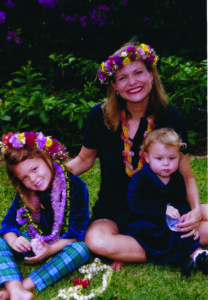
You were a partner at the doctor’s group Straub, before you met Jon. One day you walked in after a lecture in California and said, “I met this man, and I’m moving to a vineyard in California.” How did that go?
That was a real challenge. I was madly in love, and it was terribly exciting. I had never lived on the US mainland, and this move was disrupting everything. I had every intention of setting up another practice as soon as I got here because that is who I am. I am a doctor, but then I became pregnant and thought I cannot do all this at 46 and start a practice. I will wait. After a year of not taking an OB call, it really was hard to go back. Taking call is physically brutal. It’s tough. You do not realize it when you’re doing it. I still wanted to work, so I started practicing gynecology in a free clinic, so that I was not taking call.
What do you do at the free clinic?
I am their GYN consultant, and I have been there 20 years. It is such a beautiful place. It was started by two family practice physicians that went to Yale where they met. He was a ballet dancer, and she a downhill skier. They went to her father and said, “We want to start a clinic for the uninsured, not for the indigent, but the unfilled gap that cannot afford health insurance.” Her father, Warren Hellman, thought it was the stupidest idea that he had ever heard. But he put this together, and we have celebrated their 25th year. We see beautiful patients that fall into the category of “working poor.” They are so grateful.
What’s the criteria for the Free Clinic?
The only criteria for being seen is having no health insurance. We do not check, and because we do not bill for insurance, we avoid the whole hassle of doing that. We raise most of our money at a luncheon once a year in San Francisco. After Warren died, we thought funding would stop because the supporters were all his business friends. Fortunately, funders are still supporting the clinic. With COVID, over the last two years, the fundraising has been virtual. People continue supporting The San Francisco Free Clinic, today.
Do you drive to San Francisco? That is quite a hike, about an hour and a half?
Yes, I usually allow two hours.
Do you spend the night?
No, I was in clinic yesterday. I go as much as they need me. They just schedule around my availability, which is a great thing when you are working for free. Sometimes I go three times a month, sometimes once a month. I try to work longer hours, so I can see as many as ten patients in a day.
Would you ever give that up?
No I love it. It’s hard to find a gynecologist who will work for free. Also, if I do not show up, they don’t get seen. If I am gone for a while and come back and I find a cervical cancer, I think, “Oh God, if I had been here last week, maybe, I could have improved her outcome.” I would never give that up.
Who designed this home?
This home was designed by Stanley Saitowitz, a South African architect who teaches at Berkeley. I looked at another one of his houses, which was nothing like this. I really liked his style but was nervous about modern architecture. I was afraid it would feel cold, but I realize now modern architecture is not how it looks but how it makes you feel. When you are inside and here, it is about your relationship to the outside. Now, I could never live in a Tuscan farmhouse, and there is not a day that goes by that I don’t look at this place and think this is such a work of art.
It is a work of art.
He is brilliant, and his architecture is mathematically precise. Here everything is on a five-point grid. These planks are twenty by five. Even the floor panels are five inches…everything is on a five. There are no four foot or six-foot walls anywhere. So, when you look at the structure, it is appealing mathematically, and there is symmetry to everything.
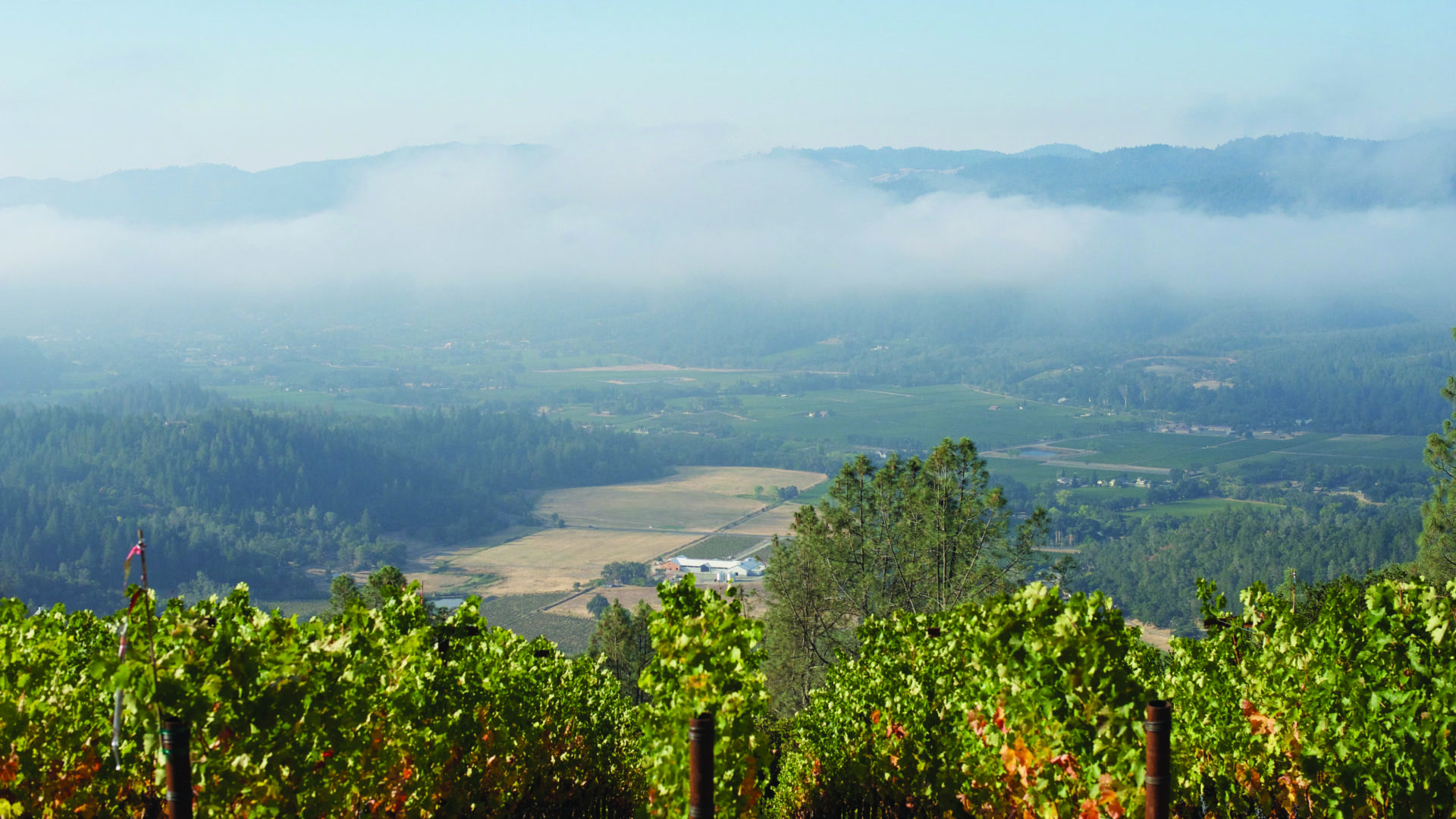
Walls of glass everywhere. . . You had to completely rebuild though?
Yes, from the fire. Jon broke his hip two days before and awoke to take a pain pill. He looked out the window, and the entire ridge was on fire. There was no smoke in the house so no smoke alarm that went off. I ran to the car in my underwear and barefoot and grabbed the dogs. Jon managed to get his shoes, his pants, his walker, his cell phone, and his computer. We drove down the hill in pitch black at four in the morning. I can remain calm under pressure and in chaos because of training and working in the operating room. But I was not calm. I was freaking out. I thought we were going to die. Thank God it was just the two of us here. Anyway, we got halfway down the mountain, and I thought we are home free. Then, we took a turn, and there were spots of fires everywhere. The fire had spread so quickly that we were driving into it. There was pitch-black smoke, and you would not be able to see anything for just a moment, then it would clear up and you were able to see clearly. Every time we made a turn, the flames were getting higher. Our neighbor was following his wife’s car that had hit a tree. Her car had caught on fire and was blocking our exit. We could not get past it.
His truck had the lights on, and the keys were still in the ignition. The truck door was open, and it was still running, so obviously he ran. I jumped out of our car and into his truck. I thought what am I going to do? Push her burning car out of the way? It was impossible, so we just started yelling for help. The fire department rescued us by cutting a hole through a fence. It was just terrifying, the noise, flames, heat and the smoke. They had those wire cutters, and it was like a slow-motion movie. After Jon and I got through the fence, I realized, “Oh my God, where are my dogs?” They must have bolted when I opened the door. I still get upset thinking about it. I called for them over and over, but they were not there. The firemen looked in the car, but they were not there either. They reassured me and said, “Animals know what to do. We will find them later.” Animal Control found Winston four hours later, not even dirty, completely unscathed having had the best day of his whole life, just entertaining everybody. But my Vizsla must have tried to find me, I think. She was severely burned, her paws to the bone. She passed away that night. It was harrowing, but that experience put everything in perspective. We were so fortunate, and I never really felt more grateful for surviving.
What year was this?
2020. It took me a while to return here because I was freaked out. Interestingly, the house was still standing, but nothing worked. The tracks for all the glass door openings were completely melted, but the glass was there, and the house looked fine. The wells, the pump house, the water treatment, the HVAC, everything that makes this house function was vaporized. All the landscaping burned, as well. Where we once had Cypress trees, everything was gone. The vineyards on three sides saved the house because they are a natural fire break. We were out of the house for over a year due to repairs. We just moved back in this past Thanksgiving.
Did it smell like fire?
There was a tremendous amount of soot inside the house because we left the doors and the windows open. We just fled. There was smoke damage, and the electrical system was burned out and had to be rewired.
You are co-proprietor and part owner of Zakin winery. Tell me how that came about?
Jon bought the property in 1998, we married in 1999, then planted in 2002, and did not release any wine until 2016 when we released our 2013. We had a group working for us when we first launched giving us this amazing start. I realized that the wine business is fun, especially the hospitality component where you meet like-minded people that enjoy wine and food. I have been given this amazing opportunity to meet people that I would never have met before. I have made so many wonderful friends. Our informal tagline is, “You come as a customer and leave as a friend.”
You have wine tastings everywhere. Does Jon attend?
It is pretty much me, but he’ll make a cameo appearance. He does not enjoy it as much as I do. I have been traveling a lot with wine dinners for my customers across the country. While I enjoy an opportunity to meet new people, go to a party or do something like that, he would much rather stay home and watch football.
What skills do you and your individual “teammates” bring to the table?
Jon is my “prince.” He is brilliant with strategy and business. He is our planner, also the IT department, and occasionally the “delivery slave.” Philippe Melka is our winemaker. He and his Alterier Melka team are extraordinarily talented. He has several projects but is able to create different styles of wine, per project. He takes the best from the land, that essence, and makes that shine. We wanted to create a “Napa Bordeaux-ish” experience in your mouth. He really understood what we were trying to do, and the result is a different style than other wines in the valley. He does this with his Atelier Melka team farmed by Pete Richmond at Silverado Farming and made at Basswood. I do the day-to-day management of the business and the hospitality I love so much. Tatiana is becoming more and more interested. It is our team and location that differentiate our wines, not any individual’s effort.
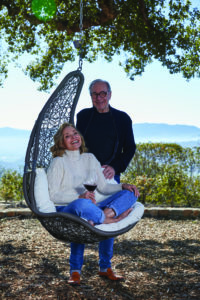
There is a joy about you . . . where does that come from?
I feel gratitude and joy.
Did you always have it?
Not like this. I have always been a positive person. But the fire was a real-life changing experience. For us, having gone through that together, brought us so much closer. A lot of good things happened with a really bad event. I really appreciate being up here too. A lot of people said, “How could you possibly go back up there after that fire?” How could I not be here? This is where we met, where our wines grow and where we raised our kids.
It is magical.
Really magical. Yes.
Do you believe in God? And if you get to ask him any question, what would that be?
Yes, I believe in God. Because I am a doctor, I would ask him, “Why do people have to suffer?”
What is it that you want to achieve here forward?
Here forward, I will continue to help people. I would also like to improve our wine every year and solidify the relationships I have with our friends and customers. And have fun! I think my life is on a perfect trajectory and can’t think of anything I would do differently at this point. I just want to continue to do more of the same.
If you could do one thing over, what would it have been?
I would have liked to work internationally. I have a passion for women’s health in third world countries.
Like “Doctors Without Borders”?
Yes. I thought I was still going to do it, but now with COVID, who knows what will happen. To work internationally and to help women that nobody else is willing to help is something I am passionate about. There are double standards in women’s healthcare, based upon being born with and without privilege.
You served on NASA’s (Institutional Review Board) as well?
Yes. When I originally moved here, I thought I would set up a medical practice but then I became pregnant. One of the women who was in the residency program with me introduced me to an astronaut, Yvonne Cagel, a physician, PhD, flight surgeon, boots on the ground soldier in the Middle East and fighter pilot. She worked at the Ames Research Center in Cupertino, and they needed a medical monitor for their 20G centrifuge studies. I loved the idea of hanging out with rocket scientists, so I accepted. They would spin people to reproduce the downward effects of gravity. The effect of the spinning can cause the blood to pool in the periphery which can then cause fainting. They needed a doctor to assess the person before fainting. It was an interesting project.
Any research, since the Nuremberg trials, requires an IRB— Institutional Review Board. NASA had a board seat vacancy, and I fit all the boxes. They wanted a physician, diversity, and a non- employee. The board was comprised of mostly white men and being a woman checked that box. If I had been of color, it would have been even better. They were seeking a non-NASA employee because they wanted different perspectives. I was invited to join the NASA IRB. Ralph Pelligra, the chief medical officer at NASA and dear friend, along with another colleague, designed and developed a non-inflatable anti-shock garment comprised largely of neoprene and Velcro. His anti-shock garment called Zoex (later renamed to NASG) was revolutionary, inexpensive to produce, and had no chance of over inflation. When placed on a person, it keeps the blood from pooling, much like panty hose. You can spin people longer with the garment on and study them longer. When I saw it, I thought this would be amazing for all the women who will die of postpartum hemorrhage in the developing countries. Most of the time they die because they cannot get to a medical center in time. You could stabilize a birth mother with this garment (that costs a hundred dollars and can be washed hundreds of times), put them on the back of a bike and get them to a center. I would love to take credit for what was accomplished, but I went to UCSF with Ralph’s blessing and made the introduction to Sue Ellen Miller, who picked it up. We presented Zoex together in Delhi at the Maternal Morbidity conference. It was called the third, most promising reduction in maternal morbidity. It was a huge deal, helping to reduce maternal morbidity in thirty-three developing countries. They eventually received a MacArthur grant, and the product is now scaled.
From your work at NASA to board service at Engender Health, you are passionate about women’s health in third world countries.
These are our sisters. How can we forget about these women? Their lives are predetermined because of where they were born.
A twist of fate.
It is a twist of fate.

